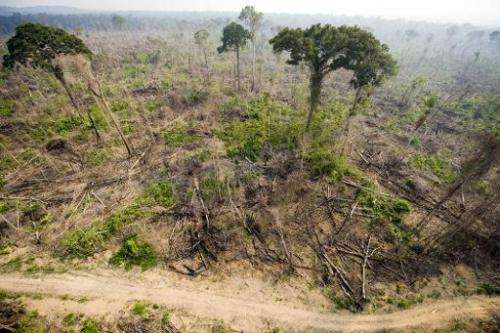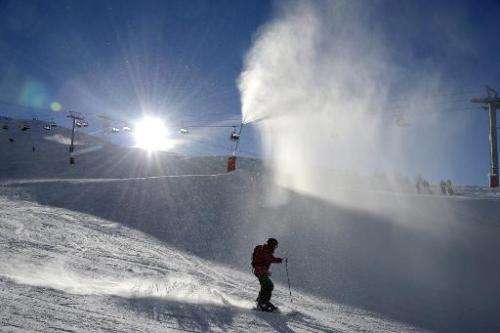Climate rhetoric faces devil in the detail at Lima talks

Politically sidelined since a 2009 UN summit almost ended in a bust-up, climate change has resurfaced as a priority but faces a brutal test at talks opening in Lima on Monday.
The 12-day haggle will show what happens when high-minded global vows enter an arena where national interest rules the roost.
"Things are still fragile, but there's been good news," said French climate negotiator Laurence Tubiana—pointing to recent political noises, and pledges of money, to protect Earth's climate system.
The meeting in the Peruvian capital is tasked with steering 196 parties toward the most ambitious climate pact in history—"the matrix for managing climate issues for the next 30 years," according to Tubiana.
Due to be signed in Paris in December 2015 and take effect from 2020, the accord would roll back carbon emissions and ease the threat of misery, ecosystem damage and species loss for future generations.
Given the UN's shaky record on climate change, the challenge is vast.
The last climate treaty was the Kyoto Protocol, inked in 1997. A bid to follow it up in Copenhagen in 2009 was a near fiasco.
But in recent months, the political tone has changed, strengthening hopes that the creaking negotiations may finally yield a result.
"The broad outlines of a deal have begun to emerge and the three largest emitters have stepped forward early and encouraged others to follow suit," said Elliot Diringer of the Center for Climate and Energy Solutions (C2ES), a US thinktank.
"We're in about as good a shape in these negotiations as I think we've been for some time."
Science has been a big driver of the shift.
In a new overview, the UN's Intergovernmental Panel on Climate Change (IPCC) painted a tableau of a carbon-ravaged world just a few generations from now if emissions continue their present trajectory.

By 2100, hunger, drought, floods and rising seas would stalk humanity and spur the risk of bloodshed as nations fight for resources.
Against this grim backdrop, UN Secretary General Ban Ki-moon staged a summit in New York in September where leaders renewed oaths to fight the scourge. Hundreds of thousands of protestors rallied in cities around the world.
Ahead of schedule, China, the United States and Europe have unveiled emissions pledges.
Key details are fuzzy, but the announcement should raise the stakes next year when all countries are meant to put pledges on the table.
Money, too, has added a dose of goodwill.
Rich countries have promised funds to the Green Climate Fund (GCF), the main vehicle for channelling help promised to poor nations in Copenhagen—a total of $100 billion (80 billion euros) annually by 2020.
An inaugural pledging session of the GCF in Berlin last week yielded $9.3 billion, just shy of an informal $10 billion benchmark set ahead of Lima.
Pitfalls
In spite of a sunnier mood, the talks face many tripwires—defence of narrow national interests, foot-dragging, finger-pointing and nit-picking that have bedevilled the climate process for years.
Problem No. 1 is agreeing on the information countries will be required to provide when they make their emissions pledges next year: things like which gases to cut, by how much and over which period.
Without transparency—the means to compare one country's effort to that of another—trust in an already troubled process could easily break down.
Another question is whether existing and future pledges meet the UN's target of curbing warming to two degrees Celsius (3.6 degrees Fahrenheit) over pre-industrial levels.
Right now, the answer is clearly no, said Sam Smith of WWF.
"When you look at all these pledges together, they're still keeping us very far away from where we need to be in order to avoid dangerous climate change," she said.
"We are going to have to have a review of these pledges, and maybe more than one review, in the year that we have remaining before the negotiations in Paris."
Developing countries are worried that too much effort is being lavished on emission mitigation, said Mohamed Adow of Christian Aid, rather than helping vulnerable states adapt to a changing climate.
"There's a danger that some countries, and particularly developed countries, could decide their contributions could be focussed on emissions reductions targets only and not on climate finance," he said.
"Many developing countries are concerned," Adow said. "A lot of procedural wrangling can be expected in Lima."
© 2014 AFP





















